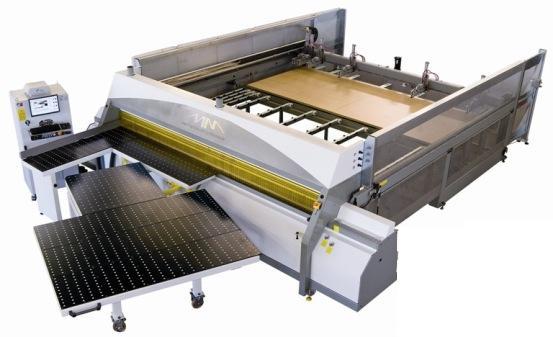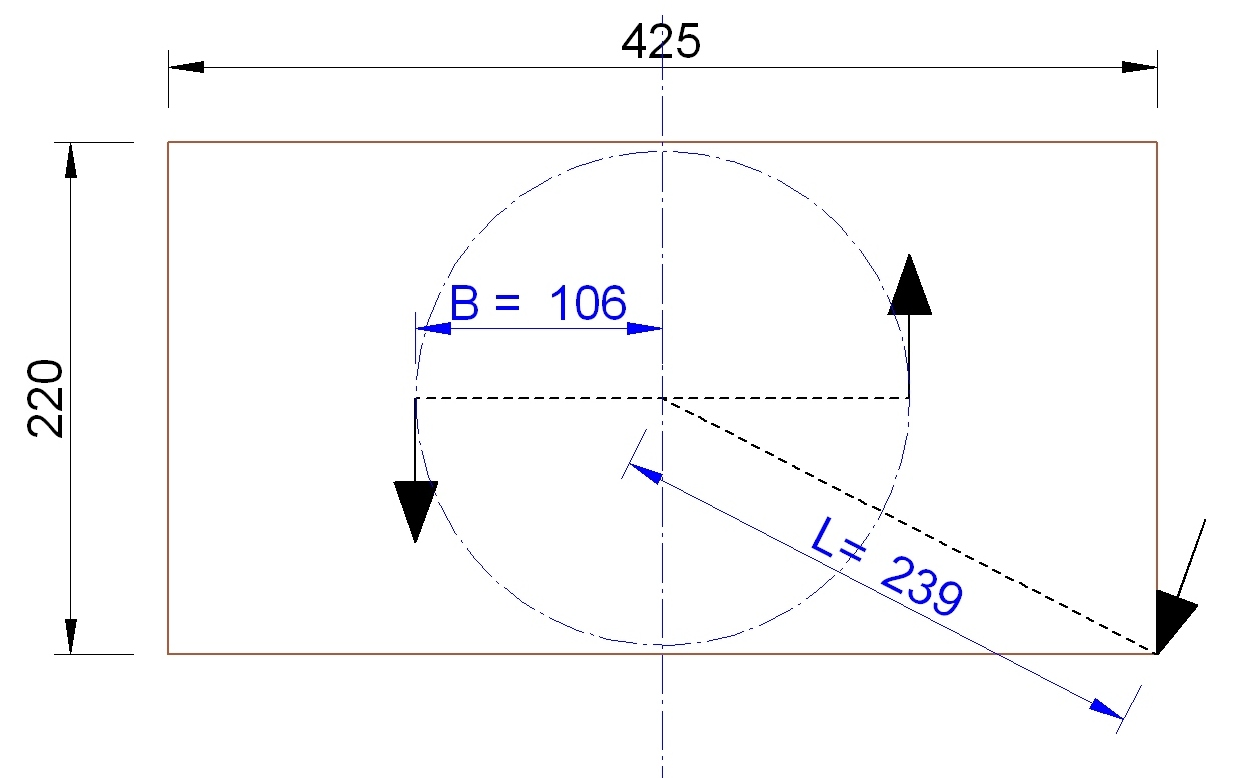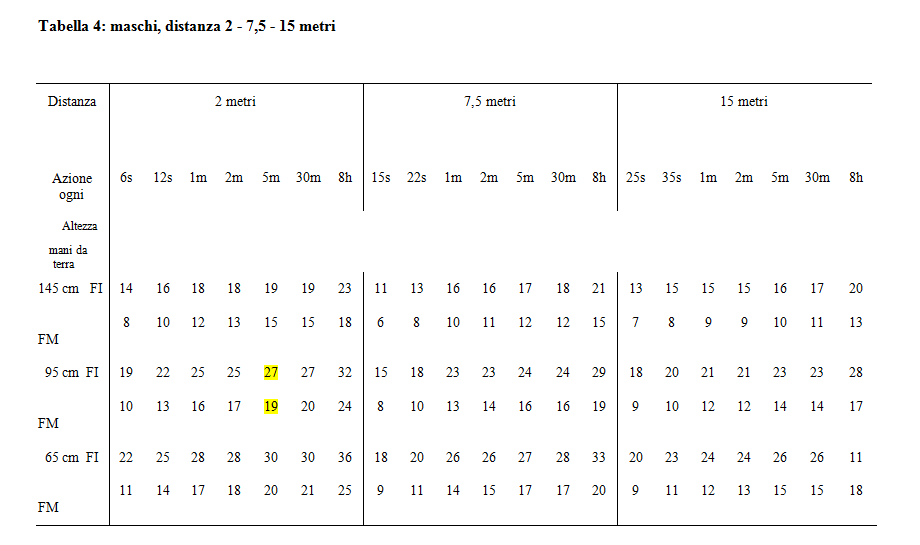Test of the panels handling effort on the rotating table
Device description: the rotating front table consists of a device, for manual actuation, designed to allow the rotation of one or more panels to be sectioned. (In ref. Figure) it is composed of: a rotary frame on which lies a supporting surface provided with device "air cushion"; the movement is effected by acting on the handle, and thereafter combining the panels, always manually, to a lateral abutment reference
 With reference to SNOOK CIRIELLO tables:
With reference to SNOOK CIRIELLO tables:
- We assume a displacement distance of 2 meters
- Consider as displacement frequency 1 maneuver every 5 min. (Overvalued rate)
- The height of the work surface is 90-95 cm.
As above these tables provide a minimum effort recommended for male individual, adult and healthy:
28 KG in thrust and traction in 27 Kg
The maximum size of the working panel are = A x B =4.25 mt x 2.2 mt
The maximum cutting height (+ overlaying panels) applies = H =108 mm
The average density of the material panels chipboard is: D = 650 kg / m ^ 3
For the above, the maximum capacity of the machine, (and therefore the maximum weight to be handled) the following applies:
P = length x width bundle pack panels x height x density = = AxBxHxD 656 Kg.
Obviously, this weight must NOT be lifted by the operator, but simply driven / rotated by combining the panels in the desired position.
We consider now the force required for the translation / rotation of the panel stack. (Ref. Fig.)
We divide the manual handling action in 2 stages:
1) Main rotation pel panels parcel
2) small rotation / matching panels to the reference edge.
1) The main direction of rotation of the package takes place on wheels, therefore, the coefficient of rolling friction will be of the order of 0.015-0.03. (Assuming an average of 0.02) Considering also an extra weight of 300kg structure.
The force to be overcome by the operator is.
(Weight + weight structure panels) * coeff. Rolling friction = (656 + 300) * 0.02 = 19 kg
Returning in the effort permitted limit.
2) To evaluate the rotation / juxtaposition effort is made to consider the hypothesis 2 equal forces:
656/2= 328 kg. (F) acting with an arm B = 106 cm (1/4 of panel).
By symmetry the axis of rotation is coincident with the center of the package.
The support flat panels are equipped with a special "air cushion" in function anti friction; Therefore, the friction coefficient "r" between the panels and support benches oscillates between 0:03 and 0.1. (Then we assume an average of r = 0.065)
The moment of resistance of friction to overcome is therefore: M = 2 * f * B * r = 45.2 Kg * Mt
Since the speed of movement are so low as to be able to neglect each of inertia action. the rotation torque which must give the operator coincides with the moment of friction resistant.
The operator also (by moving the panels from the corner) enjoys a lever arm L therefore the force that has to give (Foperator) is:
Foperator*L= 45.2 KgM * of cui
Foperator= 18,9 Kg.
Value however still lower than those SNOOK CIRIELLO, so it is acceptable
The above, as already mentioned, that in the event of rotation of the maximum processible size panels stacked to the maximum sectional height.
The operator, however, during the working day, carry a greater number of rotations of the "sub-formats" master panel; ie typically of the "stripes" of about 700 mm. wide.
In this case, by repeating the above calculations is obtained by a rotation effort on the part of the operator of only 6-8 kg.
This excellent result is obtained thanks to the large continuous support secured to the panels by the rotating floor, joined to the air cushion.



 D5 Creation
D5 Creation